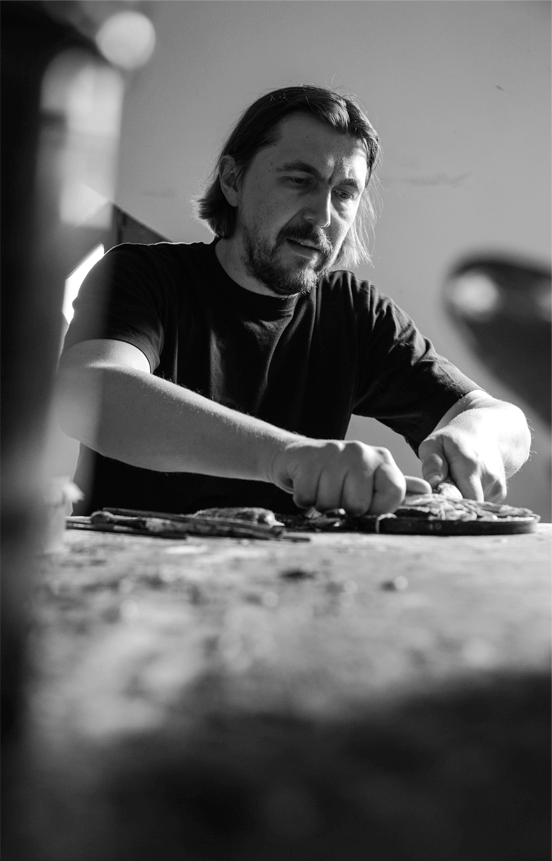
DAGMAR SRNENSKÁ: FALLING COMET
Everything that comes into our life, our world, we ourselves invite it in. Often this comes on the basis of the pictures that we carry in our minds. It is what we are thinking about. Something flits through our minds, and we attract it to ourselves. The author of the international bestseller, You Were Born Rich, Bob Proctor, wrote “wherever you are – India, Australia, New Zealand, Stockholm, London, Toronto, Montreal, or New York (and I add, in Slovakia) – we all work with the same force, with the same law. It is attraction!” And it is, universal, spatial, physical or spiritual. Many philosophers or avators of all times have agreed that the Law of Attraction is the most powerful law in the universe. Poets like William Shakespeare or William Blake said it in their poetry. Musicians like Antonio Vivaldi or Ludwig van Beethoven expressed it in music. Leonardo da Vinci and Michelangelo to illustrated it in their paintings and sculptures, while great thinkers such as Socrates, Plato, Sir Isaac Newton or Albert Einstein used it in their teachings and writing. The Law of Attraction was written in ancient writings in various forms. It was immortalized on an emerald board about 3000 years before the present era by the sentence: “Like above, so also below. As outside, so also inside.”
And this is also true for the work of Robert Hromec. And whether he is personally, or better, exhibits in New York, Paris, Milan, Rome, Marbella, Vienna, or Zurich, through his motifs in his contemporary and new works he draws from the mythologies of old Europe or the New World where this ancient force of attraction worked. Through his artistic interpretation he peers into the relations of people whom he meets on the road in ordinary life but especially imaginary, on the paths to artists in the past, present and future. In the motifs of works such as Time Capsule and Falling Comet, which are Robert Hromec’s main interpretations in the current exhibition at Danubiana, his individual artistic approaches recording chaos versus cosmos come to the forefront. Approaches which map the contemporary life of mankind in a rapid sequence of hours, days, months, or scheduling one’s own time, time frames and periods, transformations and changes of lifestyle. In his most recent works we feel that he is searching for a human and an artistic time space. He finds it and expresses it on an aluminum plate by unusual artistic techniques – by surface painting of active inputs, engraved or milled geometric elements, in the form of a specific structural surface or spatial relief. Lines, circles and spirals meet in this wonderful chaos and universal space with parts of human figures, limbs, face profiles which are cited in the form of detail, magnification or multiplication of human contour lines.
I have to compare Hromec’s current work with printmaking technology. The electric carbide grinder has replaced painting with a brush or drawing of lines and hatches in classic works created on copper or zinc plates by etching, dry point or mezzotint on an aluminum plate. He drills a line into the material itself and creates a relation of cold shine, light and shadow, as well as making changes to the surface structure. With precision, Hromec has worked the surface at a variety of depths. Abstract lines drilled in aluminum whose rotation and relief effects symbolically compete with the technique of old graphic prints created with classic etching and other printmaking techniques. As in coloured etching, in these works too Robert Hromec uses bright colours that accentuate the individual components of the pictorial space. The space, itself an optical illusion, depends not just on the lustre of the aluminum plate but more on the intensity of the direct and indirect source of the light.
In his new artistic approach of this current period, Robert Hromec is creating certain relations and tension, as well as connections between human existence and the space in which the existence of contemporary man is of importance. In his works, Robert Hromec is seeking a specific or an imaginary space for a human and artistic time/place. But it’s for us to discover if we are able to find this in his works. Hromec simply leaves it up to us. We are the ones who have to decode his art. Definitely. In Time Capsules and Falling Comets, he creates space for a specific understanding of the great infinite, offers us a boundless overview of chaos and the cosmos, sometimes it may even depict the law of specific attraction between man and space.
As the ancient sentence from 3000 years ago reads: “Like above, so also below. As outside, so also inside,” so Robert Hromec symbolically unites elements of the terrestrial and the cosmic in his artistic arcs, Time Capsule and Falling Comets. Like most artists, Hromec too attempts to step into the picture and wander around in his interior world so as to present it on the pictorial area to our external space.
Let’s let the optical illusion, the dynamic tension, the relations between different worlds and the connections between the physical and the spiritual that are being offered to us in the pictures of Robert Hromec have their effect on us.
Dagmar Kudoláni Srnenská, PhD
Bratislava, 2020